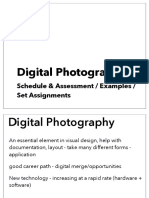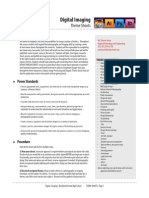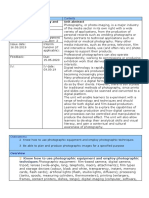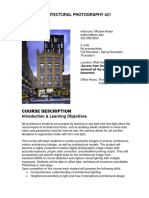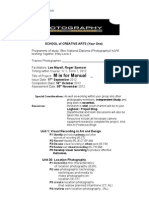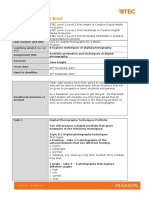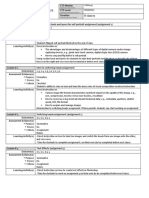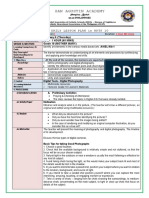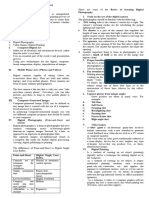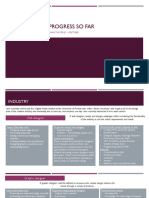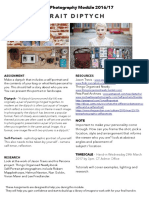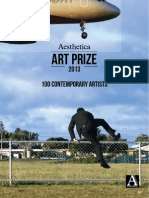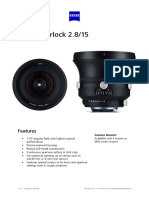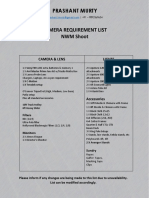Digital Photography
Schedule & Assessment / Examples /
Set Assignments
Digital Photography
An essential element in visual design, documentation,
layout - take many different forms - application
good career path
New technology - increasing at a rapid rate (hardware +
software)
HANDBOOK
AVAILABLE AS A
PDF TO DOWNLOAD /
PRINT
VIEW ON MOODLE AND
ON MODULE BLOG
SESSIONS -
due to large student numbers we have had to adapt the delivery
Module essential information / set assignments
Core subject/equipment information and research
examples of work / keeping blogs & sketchbooks
practical sessions - walks around the city
guest speakers from industry
software sessions - run by CCI Skills Centre
important to come to class and show your work
!"#$%&"' )*!+
'%,%-" -./%
'#01%-"' 2/.3 "4% ,5'"
678 94.".:/;94'<
Digital photographic imaging flow Chart
=''5:&3%&"
>./% !#01%-"'
6-4..'% #9 ". ?<
URBAN
MOTION
MUSIC / GIG
DIGITAL DARKROOM
NIGHT LIGHT
CANDID
PORTRAIT
SEASIDE
WEATHER
LANDSCAPE / CITYSCAPE
COMMERCIAL
NATURE
ARCHITECTURE
FASHION / CULTURE
ABSTRACT
HUMAN FORM
SELF - INITIATED
!"#$%&"'
@5,, -/%;"% ;
@./A5&: 1.#/&;, 60,.: ./
'A%"-40..A< ;&$ ;
9/.2%''5.&;, 9/%'%&";"5.& .2
B5&;, 53;:%'
FINAL OUTCOME
30 PHOTOGRAPHS
PROFESSIONAL PRESENTATION
SUPPORTING JOURNAL - BLOG OR
SKETCHBOOK
ALL ASSIGNMENTS ARE SET AT
THE START OF THE MODULE.
THIS IS TO BUILD UP YOUR
CONFIDENCE AND GET YOU
TAKING PHOTOS
THESE CAN ALSO THEN BE USED
AS PART OF YOUR FINAL PIECES
OF WORK.
Module Blog
http://dphot.tumblr.com/
SHOW HANDBOOK
Digital Photography
DPHOT HEMIS Code U20192
ABSTRACT
This course introduces the underlying principles of digital photography. Students will learn how digital cameras work
and how to create digital images, appreciate experimental, abstract and traditional photographic techniques and
learn how to display, compress and store photographs on a variety of platforms.
AIM
1. To enable students to appreciate the fundamental principles, the technical resources and the creative potential of
digital photography.
LEARNING OUTCOMES
On successful completion of this unit, students should be able to:
1. Demonstrate an understanding and appreciation of the application of Digital Photography as an integral element
within design
2. Understand the physical technology and methods responsible for creating digital images
3. Identify how digital photography benefits the industry and aids the print process
Hand In Date: Friday April 24th by 3pm
ASSESSMENT PATTERN
Coursework (100%) The students will produce an evaluative, working journal and a presentation of photographs.
The work will be unsupervised and tutor assessed. You must choose and present your work with close attention to the
relationship/theme. There will be a series of assignments which all relate to the unit aims and generate content for
your final body of work.
Students MUST select core subjects from the 18 listed in the handbookt.
Students will then produce photographs from their selected core subject areas. (a max of 30 photographs)
Delivery
1. A working journal (blog or sketchbook)
2. A presentation of final images either printed, exhibition or online.
Students are expected to produce a portfolio of photographic work and associated journal of process experiments,
image plans, drawings, written and visual material, demonstrating both thematic and technical research and
experimentation in technique, format and media.
This needs to be completed either in a blog or a sketchbook format.
Completed photographic prints and online showcases should be executed with high regard
to presentation and photographic convention and wherever appropriate work should be
fully edited and presented in a professional manner.
LEARNING OUTCOMES
MARKING
NAME !
Assignments ! Have these all been completed to a professional standard?
Magazine Publication | Interview | Techniques | Promotion (40%)
References / URLS / Credits for inspiration / Research / Production & Processes.
Blog / Sketchbook ! Is the Production / Ideas Process clear? (20%)
Screengrabs (video and/or still) / Idea Process / Behind the scenes / Planning /
Editing / Subject Analysis & Feedback / Software Use.
Use of blog /sketchbook to present the above effectively.
Presentation / Evaluation ! Is the final presentation of photographs
suitable for display as a showcase? Have you evaluated your final photographs?
(40%)
Presentation
Quality of work / Relevance / Advertising ! online & offline / Display options and
professional presentation of work / Flow
Evaluation !
Have you described your subjects processes clearly and concisely ?
Have you considered and examined the merits and problems of the subjects?
Have you evaluated your subject matter, equipment and editing?
What you would do differently?
OVERALL MARK
FEEDBACK
Claire Sambrook / Gary Bown 2013
DIGITAL PHOTOGRAPHIC IMAGING
ASSESSMENT 2013/14
Core Subjects - help sheets
SUBJECT EXAMPLE TIPS
Urban city, decay, street, industrial, bridges, city
people,
Always carry your camera, shoot from the hip, turn off
sounds - be quiet, get dirty
Motion Blur, panning, freezing. Motion can also
be implied in a picture by the use of
dynamic composition - for example using
powerful diagonal elements in the frame,
or showing people or objects leaving
from an edge of the frame, perhaps even
cut off by it.
The technical aspects of shooting motion are easy: a
fast shutter speed (or the action or sports setting) will
freeze motion, a slow one will introduce motion blur.
Dont be afraid to experiment with extreme cropping
or split into 3 sections.
Music/Gig Sense of movement, passion, singer and
mic, capture energy and mix of lights,
crowd shots, instruments.
Backstage.
The low lighting environment of a live gig presents
several problems to be overcome, the most trouble-
some being exposure and focus. Film speed 400 and
f2.8 will give you a good overall shot. Unless you are
familiar with the band then you cannot determine what
the lighting will do. Take a spare battery and shoot as
much as possible. Also take a small torch to check
settings etc. Experient with slow shutter speeds to
make the lighting streak.
Digital Darkroom Pushing the limits using photoshop etc,
change the entire look of an image,
extreme cropping, masking and montage.
Stitching various images together to
make one nal shot. Taking layers from
several images to make one.
Remember to save your work as a photoshop le (psd).
Be subtle and dont be afraid to use as many layers,
colours and styles as possible.
www.computerarts.co.uk is great for ideas.
Night Light Car headlights, architecture lighting, ash
outdoors/portrait, action shots with ash,
the moon, cityscape,long exposure,
lasers, copper
A tripod and slow shutter speed to capture headlights.
Or you could rest the camera on a wall for the long
exposure. Experiment with your camera ash settings
and take shots of portraits with car headlights in the
background. Painting with light - use a torch and slow
shutter speed to capture the effects.
Candid Un-posed and unplanned, immediate and
unobtrusive
Technical equipment successfully employed for candid
photography is
typically lightweight, small and
unobtrusive rather than big and intimidating. Timing is
so important with Candid photography so always be
on the look out for an opportunity and carry a small
camera with you. Be sensitive to your subject. In some
countries people will shy away from the camera as
they feel you are taking their soul away by capturing
their image.
Dont use ash!
CORE SUBJECTS
SUBJECT EXAMPLE TIPS
Portrait Close-up, portray character in
environment, lines on face/
abstract, movement, candid, head
and shoulders
The 3 general types of portrait photography are: close-ups
or facial shots, upper body shots, or environmental portraits
(where you focus on the subject and the surrounding envi-
ronment that gives the subject character). Some of the best
portraits are where the subjects look completely comfortable
like their not looking at a camera. When people try to smile
or make a certain kind of face for the camera it usually
doesn't seem very genuine. The trick is to capture the image
when the subject(s) aren't necessarily focused on the
camera. The main purpose of portrait photography is to
capture the essence of the subject(s).
At Play Leisure activities, sport, playing
with animals, children, beach
games, running, jumping
Laughter and expressions are sometimes key with this core
subject. Close-ups might work well to convey a feeling of a
playful nature
Seaside Sand, sea, close-up, landscapes,
splashes, waves, bucket and spade,
amusements,
Many people take shots looking out to sea so why not turn
around at the seashore and look for interesting opportuni-
ties. One common problem with landscape beach photo-
graphs is that while they might capture a beautiful scene they
actually have no point of interest and can as a result be
rather empty and boring. When taking a shot look for a
point of interest or focal point that will give those looking at
your photo a place for their eye to rest. Perhaps its a pat-
tern in the sand, a set of footprints, the crashing of waves
over a rock, a pier etc. Also look for the little things that tell
the story of going to the beach like shoes at the waters
edge, sand castles, sunglasses, etc.
Lastly protect your camera against the salt..it will kill it!
Weather Snow, wind, rain, sun, storms,
sunsets/sunrises, the effects of
weather on a building, erosion,
melting ice-cream, water on a
window, puddles and reections,
sun rays after a storm and through
trees.
Try to capture the atmosphere as much as possible. A forest
early morning - mist - could work better as black and white to
capture the atmosphere. A close up of a wave and splashes
of sea water could convey a storm?
When it rains you will probably have to use either a longer
shutter speed or a wider aperture because the clouds tend to
also block out direct sunlight.
Landscape/
Cityscape
Skies, mountains, valleys, trees,
rivers, and forests. A landscape is a
section or portion of scenery as
seen from a single viewpoint.
Scenery is the subject of a
landscape image. Typically, people
and animals are not shown in a
landscape, unless they are
relatively small in the image and
have been included in the
composition to show scale.
Normally 3 styles of Landscape
representational, impressionistic
and abstract. Cityscape is the same
as landscape but includes all the
features of an urban setting.
Experiment with having something in the foreground and use
this as your basis to frame the shot. Doing this adds scale to
the overall image.
Timing and opportunity play an important part.
SUBJECT EXAMPLE TIPS
Commercial Photography made or licensed for
the purpose of selling a product,
service or idea where ne-art
photography is created as an end
in itself.
Product pack shots, high street
photography - weddings, portraits,
fashion, travel etc
Work to the client brief and understand the audience that
you are pitching to. For this unit you could look at images of
the city (postcard task or tourism department of the council).
It is important to always make sure that the product that you
are selling is visible and of the highest quality.
Nature Taken outdoors and devoted to
displaying natural elements such as
landscapes, wildlife, plants, and
close-ups of natural scenes and
textures.
Photographing Nature Requires Attention
Whether youre photographing wildlife, plants or a won-
drous sunset, be aware of your surroundings. Follow these
tips to capture the best opportunities for nature photos:
Be aware of all of your senses: your ear may hear something
that your eyes have missed.
Maintain perspective: when changing locations, check out
where you have just been so you know where to travel next
to get another amazing shot.
Pay attention to your surroundings: look up and down, as
well as side to side.
Study your subjects habits: know how to anticipate an up-
coming photo opportunity or when to ee.
Architecture In and outside a building structure
or environment. Old and new,
modern and traditional, small or
large scale. Bridges, doors,
windows. Industrial, Ruins.
Be careful of your angles. Look at the shadows at every
angle - this can help with the mood/texture and also add
depth. Slow lm speed, large depth of eld, slow shutter =
tripod essential or nd a sturdy and straight wall. Look at
abstract, BOLD shapes that pop out. Use a mirror to reect
light and also add a new perspective.
Fashion Trends, culture, clothes - think in the
broadest sense. What is
considered fashionable?
Look at unique settings to showcase the model and the
clothes etc. Dont confuse this with Glamour Photography.
From the early days to the present Fashion Photographers
were/are always the risk-takers and experiment constantly
with light, subject and colour.
Abstract Real subjects, sharp focused and
un-manipulated except for normal
darkroom adjustments such as
contrast, exposure and dodging
and burning. Angles, texture,
macro, reections, shadows,
mirrors, glass. Has no rules.
Use colours/non and patterns to create an images. Let the
viewer be intrigued as to the subject.
Use your imagination
Human Form Photographer Greg Gorman
specialises in Human form.
I dissected each persons face
individually with different tech-
niques, such as lighting, camera
angle, the focal range of various
lenses. You can always hang a
light over someones head and get
an image that looks like the person.
To me, the more interesting images
are ones that leave something to
the imagination.
Get in close and look at obscure angels. Use a macro setting
to photograph the texture of the skin and highlight skin
tones. Play with shadows on the skin.
Self Initiated Open Open
Flickr Group
HTTP://WWW.FLICKR.COM/GROUPS/PHOT/
Journal Examples.
This year you have a choice - keep a
sketchbook or a blog.
For blogs use Tumblr
HTTP://WWW.TUMBLR.COM
Sketchbooks - Art Shop in Eldon - no
smaller than A4.
HAVE TO SEE ALL YOUR PROCESSES - DOCUMENT AS
MUCH AS YOU CAN
Examples
sketchbooks
HIGH QUALITY PRESENTATION OF YOUR WORK IS VITAL
HTTP://LUKEOBRIEN.CO.UK/WORK/LUKE-OBRIEN-PHOTOGRAPHY.HTML
HTTP://JACK-DALY.TUMBLR.COM/
HTTP://PIKCHURSUNIT.BLOGSPOT.CO.UK/
Examples - show processes
Examples
MUST EVALUATE YOUR WORK AT THE END. THIS COULD BE VIDEOS
Examples - sketchbooks
Examples - blogs
http://sd-digialphotography.tumblr.com/
Examples - blogs
http://jack-daly.tumblr.com/
Show videos
BLOG EXAMPLES
Student Work
FASHION
Student Work
LANDSCAPE
Final Showcase examples BLOG EXAMPLES
Blog Examples from last year - in handbook
http://jadebrightphotography.tumblr.com/
http://mateusp55.tumblr.com/
http://charlotteskinnerphotography.tumblr.com/
http://fionhot.tumblr.com/
http://charlesoconnorphotography.tumblr.com/
http://darnell-temenu.tumblr.com/
http://klyum.tumblr.com/
http://christosmavros.tumblr.com/
Please.....
Think before you shoot - no snaps
Unique images
Need to push yourselves to deliver the work to
tight deadlines and high quality
More in your next scheduled session on basic info
for this module and more about the assignments.
Constantly look . . . .
ROBIN RHODE
RESEARCH CONSTANTLY - LOOK AT STYLES / PROCESSES AND
EDITING TECHNIQUES
VIDEOS OF WORK
VIDEOS OF WORK
Books
HTTP://BOOKS.GOOGLE.COM/BOOKS?
ID=2VTO4HP9JDUC&PRINTSEC=FRONTCOVER&DQ=PHOTO+IDEA
+INDEX
PHOTO IDEA INDEX
Explore New Ways to Capture and Create
Exceptional Images with Digital Cameras and
Software
By Jim Krause
Edition: illustrated
Published by HOW Books, 2005
ISBN 158180766X, 9781581807660
GOOGLE BOOK SEARCH HAS A LOT OF
CHAPTERS
Books - AVA
HTTP://WWW.AVABOOKS.CH/
EXCELLENT QUALITY
AND SIMPLE TO
FOLLOW
Workshops
SPLIT INTO 3 GROUPS
SESSION IN CLASS EVERY OTHER WEEK
GO THROUGH ASSIGNMENTS - START PLANNING
BEFORE NEXT SESSION
YOUR CAMERA?
START A BLOG OR BUY A SKETCHBOOK
JOIN BLOG -
http://dphot.tumblr.com/
JOIN FLICKR AND FLICKR GROUP -
HTTP://WWW.FLICKR.COM/GROUPS/PHOT/
As individuals interview and photograph a
photographer about their work. You can do this in
Portsmouth or in your home town. Make sure you
start your planning early in the module and DO
your research.
Please do not leave this until last minute. At some
point we will be checking up on your progress.
You can present the outcomes however your want
- blog, printed etc. You can also present a video as
part of the process.
You are also allowed to use students on BA
Photography.
You will need to ask them questions about
their work, how they started, techniques,
equipment, subject matter, tips for starting out.
You could ask them if you could help out or watch
them during a shoot?
Ideally have 5 -10 questions to ask them. You will
need to research them and their work. It would
look very unprofessional if you turned up without
doing this.
Plan your photoshoot with them - think of location.
Do they have a studio? or perhaps a special
location?
OUTCOME - Photo Essay Magazine style spread/
feature - on blog, printed, video
TOOLS & SKILLS -
Camera, lenses, editing packages like
photoshop, gimp, lightroom, design editing -
indesign for layout
RESEARCH to get you started
www.thisisthewhat.com/category/interview/
www.interviewsbycrashtaylor.com/interviews/
www.popfoto.net/
www.globalyodel.com/
photo.net/photographer-interviews/
www.andrewsgibson.com/blog/category/
interviews-photographers/
photographerswiththeircameras.tumblr.com/
behindphotographs.com/
www.camerabag.tv/index.php
TIMESCALE - Friday 24th April 2015
Note : These Assignments are designed to help you during this module.
They will help you gain confidence and start to build up a library of photographs to work with for your final hand!in.
Interview & Photograph a Photographer
Assignment
P O R T R A I T
ASSIGNMENT:
Take Portraits of yourself and 1 other
person - Max of 3 final photographs.
RESEARCH
Make sure to research portrait
photographers for examples of work and
techniques - for example Rankin, Robert
Mapplethorpe, AnnieLeibovitz, Herb Ritts,
Perou. Make sure to credit your sources
and link back to their websites or add url to
your sketchbooks.
RESOURCES
http://www.day19.com/v6/ - superb site
http://www.herbritts.com
http://photo.net/gallery/ do a search on
portraits
THINK OF: Framing, light, get close, view
point,
angles, shadows, perspective.
NOTE
look at abstract angles and placement of
subject / location. Look at reections,
behind glass, using mirrors etc
GET IN CLOSE TO YOUR SUBJECT
TIMESCALE - Friday 24th April 2015
Tutorials will cover examples, lighting
and history.
Note : These Assignments are designed to help you during this module.
They will help you gain confidence and start to build up a library of images to work with for your final hand-in.
HTTP://WWW.ITSNICETHAT.COM/PUBLICATIONS/
Assignment
Digital Photography Module
BRIEF
Develop a series of experiments with both your
camera and settings, editing and showcasing your
final results.
Please come out of your comfort zones and be
brave.
Do not use automatic modes or adjustments in camera or
software.
Ideas - depth of field, aperture, lenses and
Freelensing, ISO Film Speed settings, lighting,
Multiple Exposure, old and new cameras elements
combined, editing experiments - digital darkroom.
Please make sure that you document behind the
scenes processes of how you achieved the final 3
photographs.
You can present the outcomes however your want -
blog, printed, video.
TIMESCALE - Friday 24th April 2015
OUTCOME - 3 Final photographs with 3 different
techniques. Photo Essay style - on blog, printed, video
TOOLS & SKILLS - Camera, lenses, lighting, editing
packages like photoshop, gimp, lightroom,
RESEARCH to get you started
Selective Focus / Depth of Field
http://photospot2004.blogspot.co.uk/2004/07/depth-of-
field-third-dimension.html
http://learnmyshot.com/how-to-photograph-using-selective-
focus/
General
http://www.photographymad.com/
http://www.popphoto.com/tags/shooting
http://content.photojojo.com/diy/create-in-camera-white-
balance-experiments/
http://digital-photography-school.com/adding-randomness-
to-your-photos
http://petapixel.com/2013/04/30/a-photographers-
guide-to-freelensing-the-poor-mans-tilt-shift-lens/
Note : These Assignments are designed to help you during this module.
They will help you gain confidence and start to build up a library of photographs to work with for your final hand!in.
EXPERIMENTS
Promoting & Presenting
your work as a photographer
Research how photographers advertise themselves. Provide
examples on your blog or in your sketchbook. Learn from this
research and look at the various formats for advertising your
photography.
The hand!in for this assignment is 30 final photographs
presented in a professional way with a supporting blog or
sketchbook. You can use work already done
in other assignments.
Your starting point should be researching photographers and
other creatives for inspiration.
How do they market themselves?
How do they present their work?
Write a short biography about yourself & style of work
What can you learn from this?
What have you learnt from other assignments?
Look at the different formats available to you:
website, printed, video, exhibition.
What is your best plan of action?
How can you best display your work?
Make sure you choose categories as specified in
the handbook.
TIMESCALE - Friday 24th April 2015
Resources:
http://blog.noplasticsleeves.com/category/
digital_portfolios/
http://www.jasontravisphoto.com/
http://www.day19.com/
http://www.simonhoegsberg.com/
http://theselby.com/
www.moo.com ! business cards
http://www.flickr.com/groups/artofthebusinesscard/
http://thephotographersgallery.org.uk/home
THINK OF:
Quality of photographs, Layout, colour, font, logo.
Typography is very important.
Look at the resources and be inspired = learn
BE CONSISTENT WITH YOUR PRESENTATION OF
WORK.
Put your website url and contact details on the card/s.
As before put all ideas and processes in
your blogs/sketchbooks.
PLAN OUT YOUR CAMPAIGN CAREFULLY
Put your website address and contact details
on any printed work.
Websites MUST be LIVE!
!""#$%&'%(
All photographers advertise themselves and their services. It is vital that a photographers work is
seen in as many places as possible both online and offline. Even if they have a website they still
require offline advertising. Examples are ! websites, business cards, flyers, photo!books, prints,
exhibitions, connecting with social media ! e.g. Twitter, Facebook, Linkedin, Instagram, Flickr
All four assignments are now available on the module blog.
You can choose to do these in whatever order you want although
the promotion/presentation assignment would be better to do at
the end when you have content.
In class we will be going through skills, techniques to help you with
each assignment ending up in a high quality portfolio of your final
30 photographs.
We are all here to help you get the best out of this module but YOU
have to put the work in.
There will be reviews in-class and this will include peer reviews.
FORMAT - DELIVERY
Lectures with Gary Bown - technical side
Workshops with Claire Sambrook, Chris Golya -
assignments - looking at your work and progress
Seminars - used for practical - locations, subjects,
techniques
Guest Photographers
Software help - CCI SKILLS - you should have been
informed that you need an intermediate
understanding of software skills to join this module
for help with this -
http://www.port.ac.uk/departments/faculties/cci/cciskills/creative/
Lastly . . .
This module requires you to take photographs throughout the year - on average
about 100 a week. The assignments are there to help you start to compile a body
of work. Carry your camera with you at all times. A little notebook is also good.
Try to think about a consistent style - research other photographers
Constantly seek feedback on your work
Plan ahead - photographs, locations, equipment, software, storage, blog,
sketchbook, tasks, save your work/back up!
Students that dedicate time and effort will be rewarded
Important to enjoy your exploration and journey with your camera.
London Camera Exchange
Portsmouth
STUDENT DAY
Tuesday 30th Sept 9-5.30
Offers from the leading brands.
Help and advice from staff.


